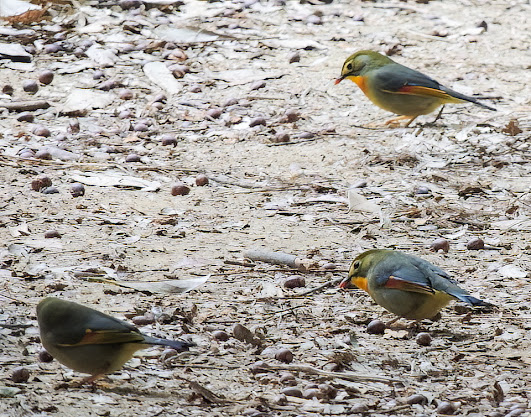 |
| P B Medawar in 1960 |
In his review published in 1961, now deservedly more famous than the book* itself, Peter Medawar started as he meant to go on. After quoting five aphorisms he extracted, Medawar wrote:
This little bouquet of aphorism, each one thought sufficiently important by its author to deserve a paragraph to itself, is taken from Père Teilhard's The Phenomenon of Man. It is a book widely held to be of the utmost profundity and significance; it created something like a sensation upon its publication in France, and some reviewers hereabouts called it the Book of the Year — one, the Book of the Century. Yet the greater part of it, I shall show, is nonsense, tricked out with a variety of metaphysical conceits, and its author can be excused of dishonesty only on the grounds that before deceiving others he has taken great pains to deceive himself. The Phenomenon of Man cannot be read without a feeling of suffocation, a gasping and flailing around for sense. There is an argument in it, to be sure — a feeble argument, abominably expressed — and this I shall expound in due course; but consider first the style, because it is the style that creates the illusion of content, and which is a cause as well as merely a symptom of Teilhard's alarming apocalyptic seizures.
The dissection, analysis and demolition of the Jesuit priest’s bestseller on the evolution of man—which kept him in trouble with the Catholic Church—is so well known and readily available online that I will not include large extracts. Some, however, are too delicious to resist:
Laymen firmly believe that scientists are one species of person. They are not to know that different branches of science require very different aptitudes and degrees of skill for their prosecution. Teilhard practised an intellectually unexacting kind of science in which he achieved a moderate proficiency. He has no grasp of what makes a logical argument or of what makes for proof. He does not even preserve the common decencies of scientific writing, though his book is professedly a scientific treatise.
It is written in an all but totally unintelligible style, and this is construed as prima-facie evidence of profundity. (At present this applies only to works of French authorship; in later Victorian and Edwardian times the same deference was thought due to Germans, with equally little reason.) It is because Teilhard has such wonderful deep thoughts that he's so difficult to follow—really it's beyond my poor brain but doesn't that just show how profound and important it must be?
The fire of Medawar’s review was not just aimed at the author. Sir Julian Huxley came in for it as a backer of Teilhard de Chardin or at least part of what Huxley thought he was saying. Perhaps, like me, Medawar thought that Huxley, but not the other Huxleys, was a grossly over-rated player in early 20th century biology. Oh, and the French did not escape:
French is not a language that lends itself naturally to the opaque and ponderous idiom of nature-philosophy, and Teilhard has according resorted to the use of that tipsy, euphoristic prose-poetry which is one of the more tiresome manifestations of the French spirit.
Medawar concluded:
I have read and studied The Phenomenon of Man with real distress, even with despair. Instead of wringing our hands over the Human Predicament, we should attend to those parts of it which are wholly remediable, above all to the gullibility which makes it possible for people to be taken in by such a bag of tricks as this. If it were an innocent, passive gullibility it would be excusable: but all too clearly, alas, it is an active willingness to be deceived.
When the English translation of Teilhard’s book appeared in Britain, Medawar was preparing his Reith Lectures for BBC Radio. They were on ‘The Future of Man’. Medawar returned to his review and republished it as a chapter in his 1982 book, Pluto’s Republic. He discussed it in an introductory chapter and ended with:
My aged mother was very shocked by my review of Teilhard: 'How could you be so horrid to that nice old man? she asked me. The reason, I told her, was that Teilhard had described his book as a work of science—and one executed with remorseless logic—and as a work of science it has been accepted by its more gullible readers. If only he had described it as an imaginative rhapsody 'based on science’ in much the same way as some films are said to be based on books to which in the outcome they seem to bear little resemblance, then The Phenomenon of Man would have caused no offence.
Teilhard de Chardin (1881-1955) is now perhaps better remembered for his role in the initial excavations of Piltdown Man, that greatest hoax. Some suspect he was involved but on Medawar’s reasoning his own gullibility was so great that he would have easily been fooled. He was involved in the excavation of Peking Man, spending 20 years in China as priest/explorer/geologist/theologian/palaeontologist, also the cause of friction between him and his superiors in Rome.
.jpg) |
| Teilhard de Chardin |
*The French original was published in 1955, the years of Teilhard’s death. The English translation was published in 1959.
Medawar PB. 1961. The Phenomenon of Man. By Pierre Teilhard de Chardin. With an introduction by Sir Julian Huxley. Collins, London, 1959 .Mind 70, 99-106.
Medawar PB. 1982. Pluto’s Republic. Oxford University Press.












